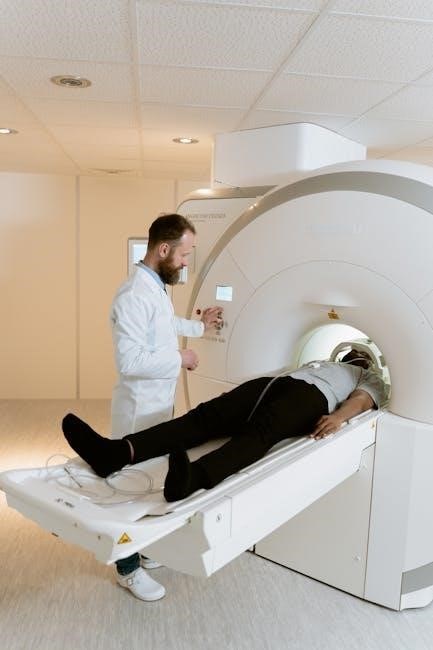ADOS-2 Assessment: A Comprehensive Guide
The Autism Diagnostic Observation Schedule, Second Edition (ADOS-2), is a standardized, semi-structured assessment for diagnosing Autism Spectrum Disorder (ASD). Clinicians use it through direct observation and interaction with individuals, evaluating communication, social interaction, play, and imagination. ADOS-2 is considered a gold-standard observational instrument for diagnosing ASD across ages.
What is ADOS-2?
The Autism Diagnostic Observation Schedule, Second Edition (ADOS-2), is a standardized and semi-structured assessment tool employed to evaluate communication, social interaction, play, and imaginative use of materials in individuals suspected of having Autism Spectrum Disorder (ASD). It is designed to elicit behaviors directly observed by trained professionals, making it a valuable component of a comprehensive ASD diagnostic process.
ADOS-2 is not a standalone diagnostic tool but rather part of a broader evaluation that includes developmental history, medical examination, and input from parents or caregivers. The assessment involves engaging the individual in various activities tailored to their age and developmental level. These activities provide opportunities to observe social and communicative behaviors indicative of ASD.
Clinicians use ADOS-2 to assess a wide range of individuals, from toddlers as young as 12 months to adults. The tool’s versatility lies in its modular structure, with different modules designed for varying ages and language abilities. This allows for a more precise and relevant evaluation of each individual’s unique presentation of ASD characteristics.
Ultimately, ADOS-2 serves as a crucial observational measure that aids clinicians in making informed diagnostic decisions regarding ASD. Its standardized nature ensures consistency and reliability in assessments across different settings and professionals.

Purpose of ADOS-2
The primary purpose of the Autism Diagnostic Observation Schedule, Second Edition (ADOS-2), is to provide a standardized and systematic method for assessing the social communication and interaction skills of individuals suspected of having Autism Spectrum Disorder (ASD). It serves as a critical component in the diagnostic process, offering clinicians an objective and structured way to observe behaviors characteristic of ASD.
ADOS-2 aims to elicit and evaluate specific behaviors related to social affect, communication, and repetitive behaviors or restricted interests. By observing these behaviors in a standardized setting, clinicians can determine the presence and severity of ASD-related symptoms. This information is crucial for making accurate diagnoses and developing effective intervention plans.
Furthermore, ADOS-2 facilitates the differentiation of ASD from other developmental conditions that may present similar symptoms. By providing a clear framework for observation and scoring, it helps clinicians distinguish between ASD and other disorders, ensuring that individuals receive the appropriate diagnosis and support.
Beyond diagnosis, ADOS-2 can also be used to monitor progress over time. By administering the assessment periodically, clinicians can track changes in an individual’s social communication skills and adjust interventions as needed. The ADOS-2 is a valuable tool for both initial assessment and ongoing monitoring in the management of ASD.
ADOS-2 Modules and Age Ranges
The ADOS-2 features five distinct modules, each tailored to specific age ranges and language abilities, ensuring appropriate assessment across a wide spectrum of individuals. These modules provide flexibility in evaluating children, adolescents, and adults with varying levels of communication skills.
The Toddler Module is designed for children aged 12 to 30 months who do not consistently use phrase speech. Module 1 is intended for children 31 months and older who use single words or have no consistent phrase speech. Module 2 is for children of any age who use phrase speech. Module 3 is designed for verbally fluent children and young adolescents. Module 4 is for verbally fluent older adolescents and adults.
The selection of the appropriate module is based on the individual’s current expressive language level and chronological age, rather than their developmental level. This approach ensures that the assessment tasks are appropriately challenging and relevant, maximizing the accuracy of the results.
Each module contains a standardized set of activities and materials designed to elicit behaviors relevant to the diagnosis of ASD. These activities are structured to provide opportunities for social interaction, communication, and play, allowing the examiner to observe and code specific behaviors related to autism spectrum disorders.
ADOS-2 Administration and Observation
Administering the ADOS-2 requires a trained professional who can skillfully engage the individual in interactive activities and carefully observe their behaviors. The assessment involves presenting standardized materials and prompts designed to elicit social and communicative responses.
During the ADOS-2 administration, the examiner observes and records specific behaviors related to social interaction, communication, play, and repetitive behaviors. These observations are crucial for accurately scoring the assessment. The examiner must be attentive to both the presence and absence of certain behaviors, as well as the quality and context in which they occur.
The examiner aims to create a comfortable and engaging environment to encourage the individual to display their natural behaviors. Standardized prompts are used to elicit specific responses, but the examiner also allows for flexibility to follow the individual’s lead and observe spontaneous interactions.
Direct observation is a cornerstone of the ADOS-2, as it allows the examiner to assess behaviors in a real-time, interactive context. This approach provides valuable insights into the individual’s social and communicative functioning, contributing to a more comprehensive understanding of their strengths and challenges related to ASD.
ADOS-2 Scoring and Interpretation
ADOS-2 scoring involves assigning numerical codes to observed behaviors based on specific criteria outlined in the ADOS-2 manual; These codes reflect the presence, frequency, and quality of various social and communicative behaviors. Accurate scoring requires a thorough understanding of the ADOS-2 coding system and careful attention to the individual’s behaviors during the assessment.
After scoring, algorithms are applied to generate summary scores that reflect the individual’s overall level of social-communication impairment. These scores are then compared to established cut-off scores to determine whether the individual meets the diagnostic criteria for ASD.
Interpretation of ADOS-2 results should always be done in the context of other relevant information, including the individual’s developmental history, medical history, and other assessment data. The ADOS-2 is a valuable tool for identifying ASD, but it should not be used in isolation to make a diagnosis.
Clinical judgment is essential in interpreting ADOS-2 results. Factors such as the individual’s age, language abilities, and cultural background should be considered when interpreting the scores. A comprehensive understanding of ASD and its presentation across different individuals is crucial for accurate interpretation.
ADOS-2 as Part of a Comprehensive Assessment
The ADOS-2 is a valuable tool, it should be used as just one component of a comprehensive assessment for Autism Spectrum Disorder (ASD). A comprehensive assessment involves gathering information from multiple sources and using various assessment methods to obtain a complete picture of the individual’s strengths and weaknesses.
A comprehensive assessment typically includes a detailed developmental history, obtained through interviews with parents or caregivers. Information about the individual’s early development, milestones, and any concerns about their social, communication, or behavioral development is essential.
In addition to the ADOS-2, other standardized assessments may be used to evaluate cognitive abilities, language skills, adaptive behavior, and social-emotional functioning. These assessments can provide valuable information about the individual’s overall developmental profile.
Observations of the individual in different settings, such as at home or in school, can provide valuable information about their social and communication skills in real-world contexts. Information from teachers, therapists, or other professionals who work with the individual can also be helpful.
A comprehensive assessment should also include a medical evaluation to rule out any underlying medical conditions that may be contributing to the individual’s symptoms. Genetic testing may also be considered in some cases.
ADOS-2 vs. ADOS
The ADOS-2 is a revision of the original Autism Diagnostic Observation Schedule (ADOS). While both versions share the same fundamental structure and purpose—to assess social interaction, communication, play, and imaginative use of materials to aid in the diagnosis of Autism Spectrum Disorder (ASD)—the ADOS-2 incorporates several key improvements and updates.
One significant change is the addition of a Toddler Module, specifically designed for children between 12 and 30 months of age who do not consistently use phrase speech. This module allows for earlier assessment and diagnosis of ASD in very young children.

The ADOS-2 also features updated protocols and algorithms across all modules. These revisions reflect advances in research and clinical understanding of ASD. The updated algorithms provide more accurate and nuanced scoring, enhancing the diagnostic precision of the instrument.
Another notable addition is the Comparison Score, which provides a standardized metric for comparing an individual’s performance across different modules. This allows clinicians to track changes in symptom severity over time and to compare individuals with different developmental levels.
Overall, the ADOS-2 improves upon the original ADOS by providing a more comprehensive, accurate, and developmentally sensitive assessment of ASD.
Calibrated Severity Scores (CSS) in ADOS-2
Calibrated Severity Scores (CSS) are a valuable addition to the ADOS-2, providing a standardized metric to quantify the severity of autism-specific behaviors. These scores allow clinicians to compare individuals across different ADOS-2 modules, age groups, and developmental levels, facilitating a more nuanced understanding of ASD symptom presentation.
CSS are derived from raw ADOS-2 scores using a complex statistical process that accounts for variations in performance related to age and language abilities. This calibration ensures that the scores reflect the true severity of autistic traits, rather than being influenced by extraneous factors.
The CSS system includes both Total CSS and Domain CSS. Total CSS provides an overall measure of ASD severity, while Domain CSS offer insights into specific areas of functioning, such as social affect and restricted and repetitive behaviors.
The introduction of CSS enhances the clinical utility of the ADOS-2 by enabling more precise monitoring of treatment progress, facilitating research on ASD subtypes, and improving communication among clinicians and researchers. By providing a standardized measure of severity, CSS contribute to a more comprehensive and individualized approach to ASD assessment and intervention.
ADOS-2 for Adults
While often associated with children, the ADOS-2 is a crucial tool for assessing adults suspected of having Autism Spectrum Disorder (ASD). Diagnosing ASD in adults can be challenging due to the potential for masking behaviors, co-occurring mental health conditions, and the evolution of autistic traits over time. The ADOS-2 provides a structured and standardized method to evaluate social interaction, communication, and repetitive behaviors, aiding in accurate diagnosis.
The ADOS-2 administration for adults typically involves Module 4, which is designed for verbally fluent individuals. The assessment explores conversational skills, social awareness, and the presence of restricted interests. Clinicians observe subtle cues and patterns of behavior that may indicate underlying autistic traits.
Using the ADOS-2 with adults requires specialized training and expertise. Clinicians must be adept at differentiating ASD-related behaviors from other conditions and considering the individual’s life history and experiences. A comprehensive evaluation, including the ADOS-2, is essential for accurate diagnosis and appropriate support for adults with ASD.
ADOS-2 Training and Certification
Due to the complexity and nuances of the ADOS-2, proper training and certification are essential for accurate administration and interpretation. ADOS-2 training programs are designed to equip clinicians with the necessary skills to effectively use the assessment tool and understand its underlying principles.
Typically, ADOS-2 training involves a combination of didactic instruction, video demonstrations, and hands-on practice. Participants learn about the different modules, coding systems, and scoring procedures. They also gain experience in observing and identifying key behaviors indicative of ASD. Furthermore, training emphasizes the importance of considering contextual factors and cultural sensitivity during the assessment process.
Certification in ADOS-2 administration often requires completing a training workshop and demonstrating proficiency through supervised administrations. Certified ADOS-2 users demonstrate a thorough understanding of the assessment tool and its appropriate application. Maintaining certification may involve ongoing education and adherence to ethical guidelines.
Access to qualified ADOS-2 professionals is essential for ensuring accurate diagnoses and appropriate interventions for individuals with suspected ASD.
Limitations of ADOS-2

While the ADOS-2 is a valuable tool in ASD assessment, it’s important to acknowledge its limitations. The ADOS-2 is just one part of a comprehensive evaluation and shouldn’t be used in isolation to make a diagnosis. Clinical judgment, developmental history, and other assessment data are crucial for accurate conclusions.
The ADOS-2 relies on observing behaviors during a structured interaction. This setting may not fully capture an individual’s typical behavior in natural environments. Factors like anxiety, fatigue, or unfamiliarity with the examiner can influence performance. Additionally, individuals with subtle or well-compensated social communication differences may not exhibit enough symptoms to meet diagnostic criteria on the ADOS-2.

Cultural and linguistic differences can also affect ADOS-2 results. The standardization sample may not fully represent diverse populations, potentially leading to misinterpretations. Furthermore, the ADOS-2 may not be appropriate for individuals with significant sensory or motor impairments that interfere with participation.
Acknowledging these limitations is essential for responsible ADOS-2 use. Clinicians must interpret findings cautiously and consider the individual’s unique circumstances.
Resources for ADOS-2 Information
For professionals seeking comprehensive information about the ADOS-2, several resources are available to enhance understanding and ensure proper application. The official publisher, Western Psychological Services (WPS), offers the ADOS-2 manual, training materials, and updates on scoring and interpretation.
Professional organizations like the American Psychological Association (APA) and the American Speech-Language-Hearing Association (ASHA) provide guidelines and resources related to autism assessment, including information on the ADOS-2. University-based autism centers and research institutions often conduct ADOS-2 training workshops and offer consultation services. These centers may also have research publications and articles that provide insights into the ADOS-2’s validity and clinical utility.
Online databases like PubMed and Google Scholar can be searched for peer-reviewed articles on the ADOS-2. These articles may cover topics such as its use in specific populations, comparisons with other diagnostic tools, and the impact of modifications. It’s also helpful to consult with experienced clinicians who have expertise in ADOS-2 administration and interpretation. They can provide practical guidance and share their knowledge of best practices.
Continuing education courses and workshops focused on autism assessment often include ADOS-2 training modules.





